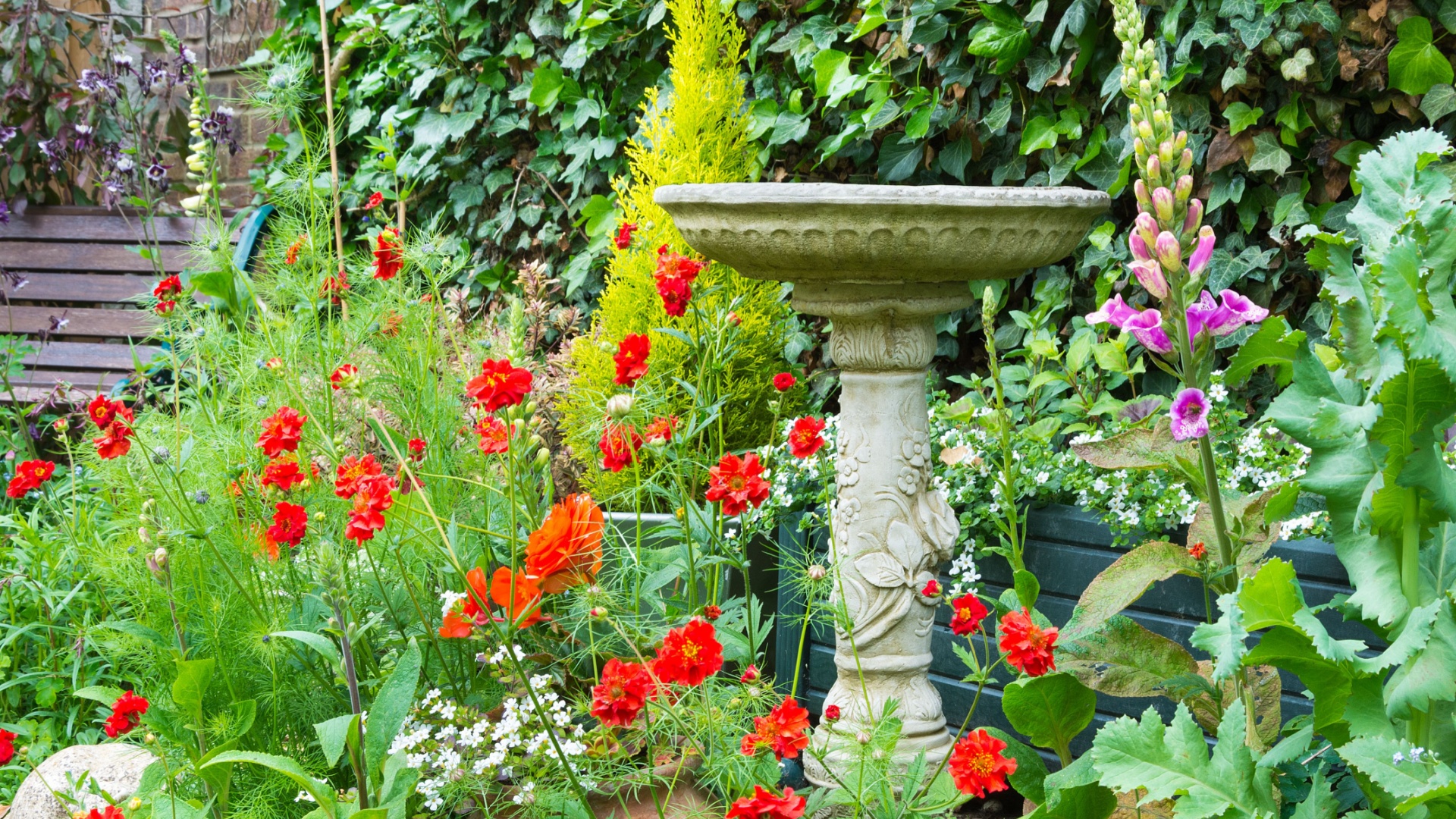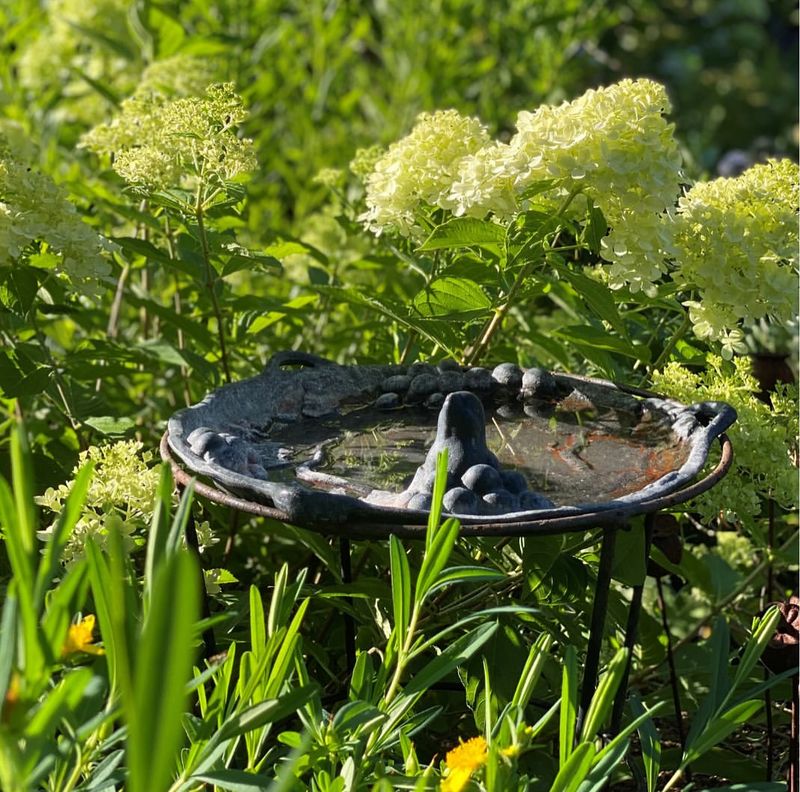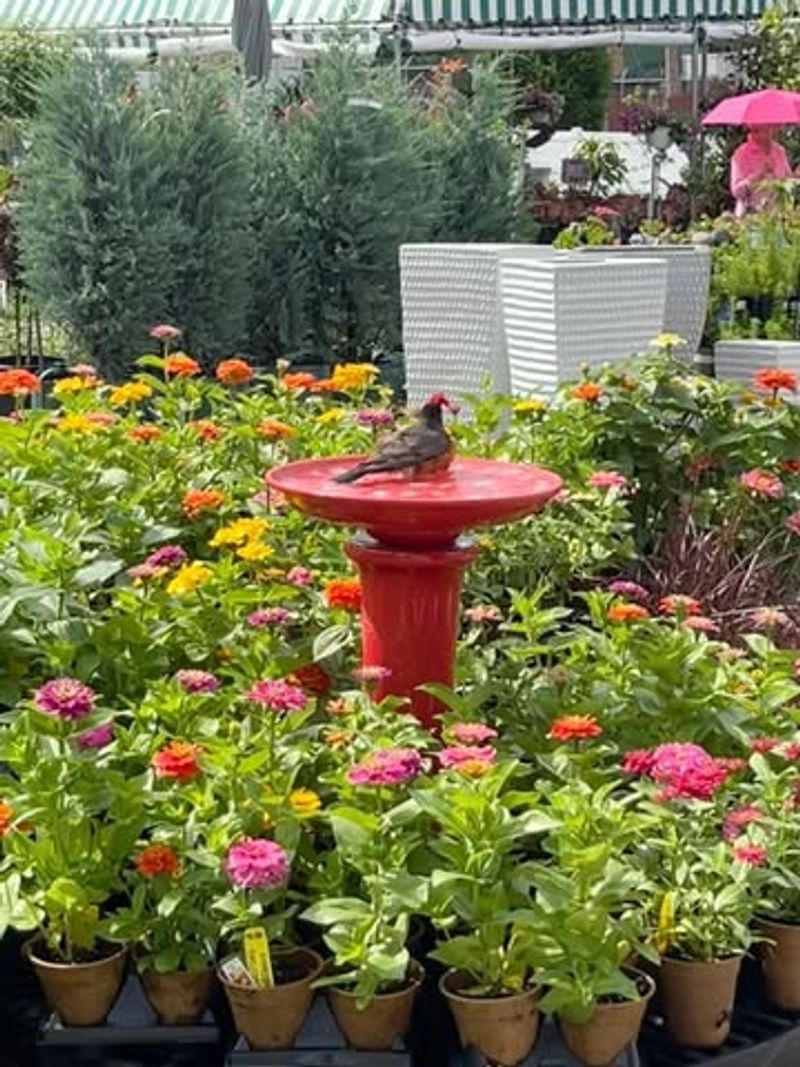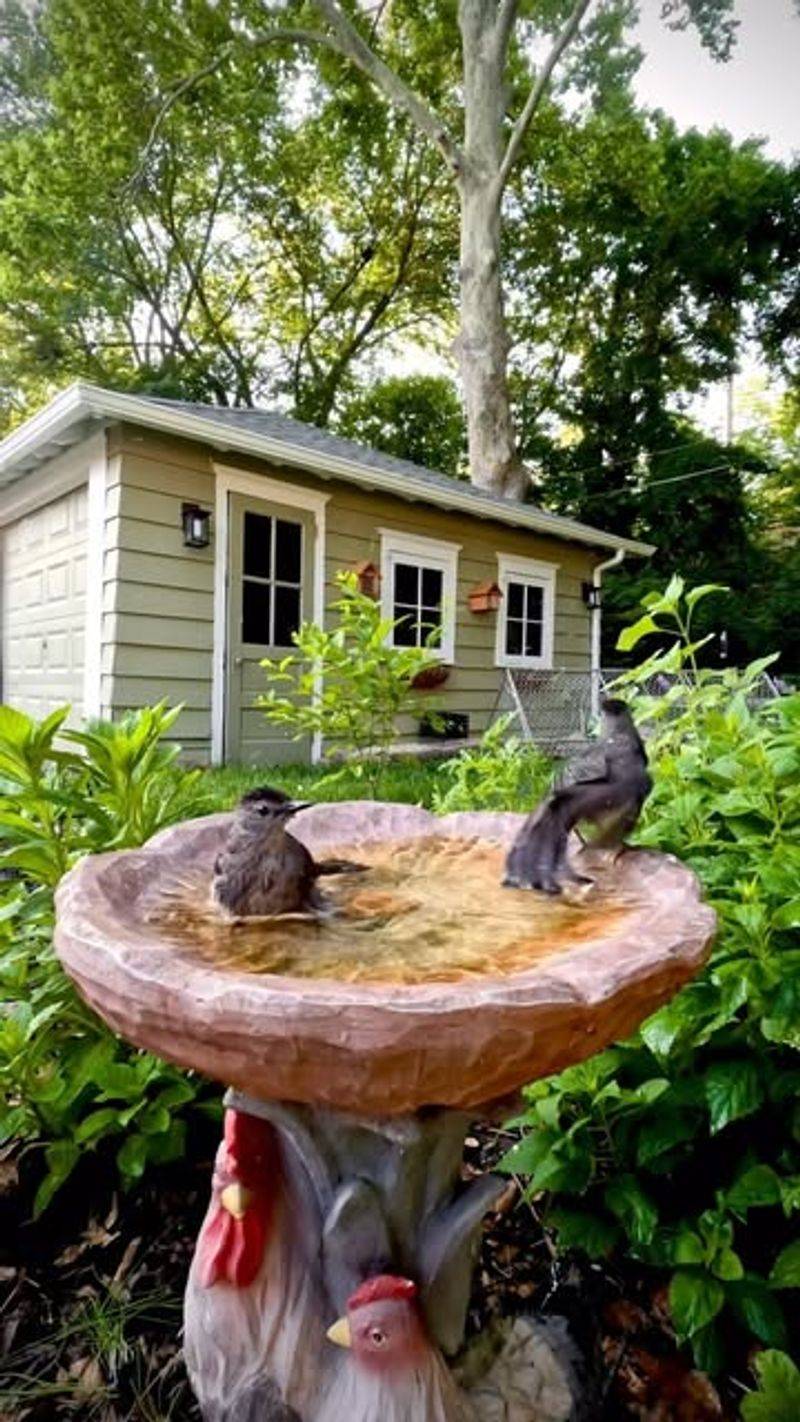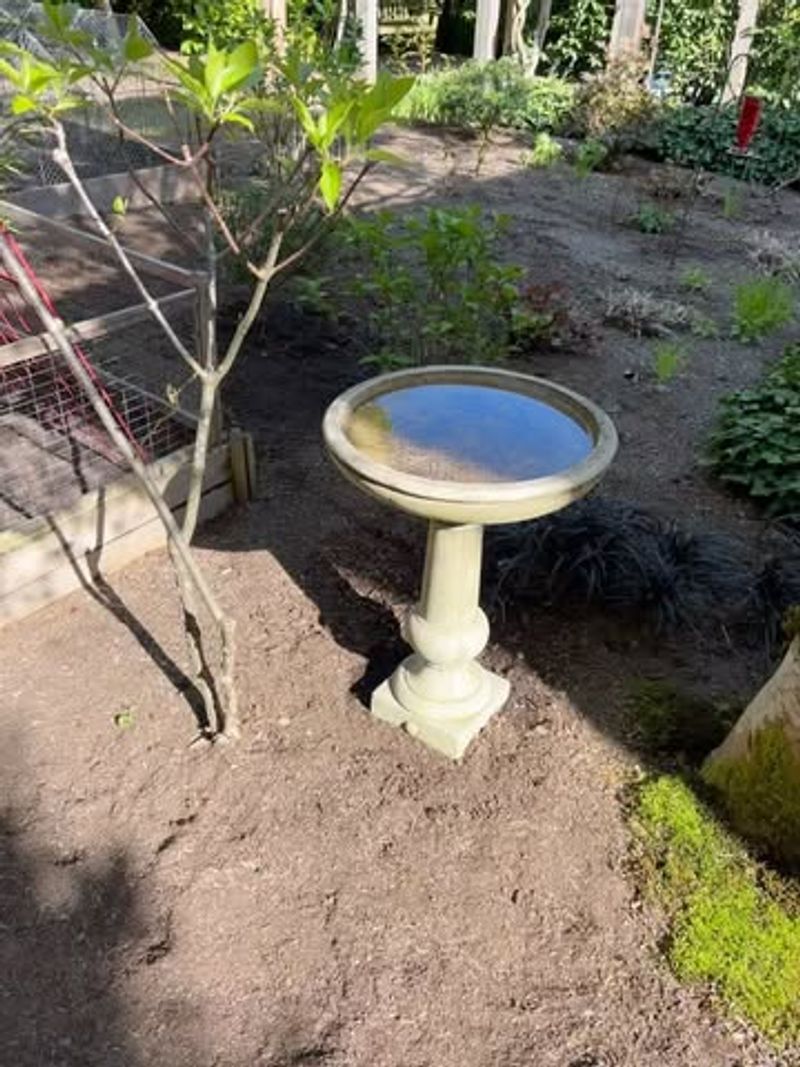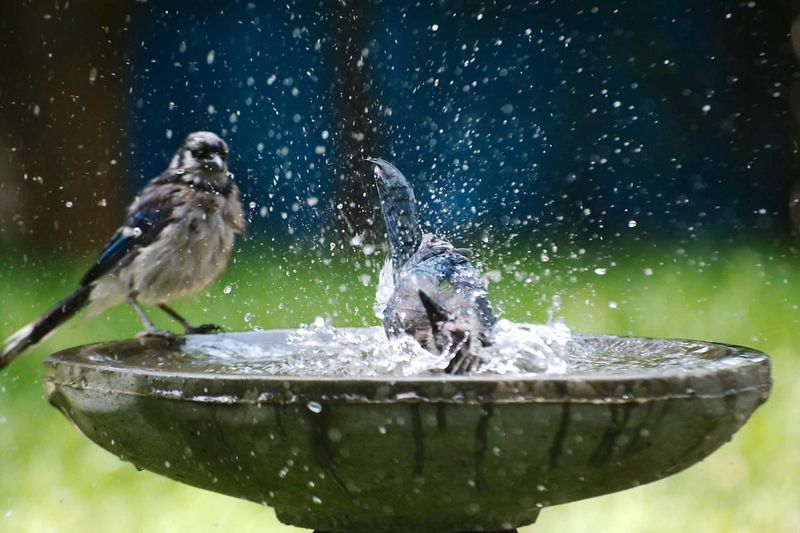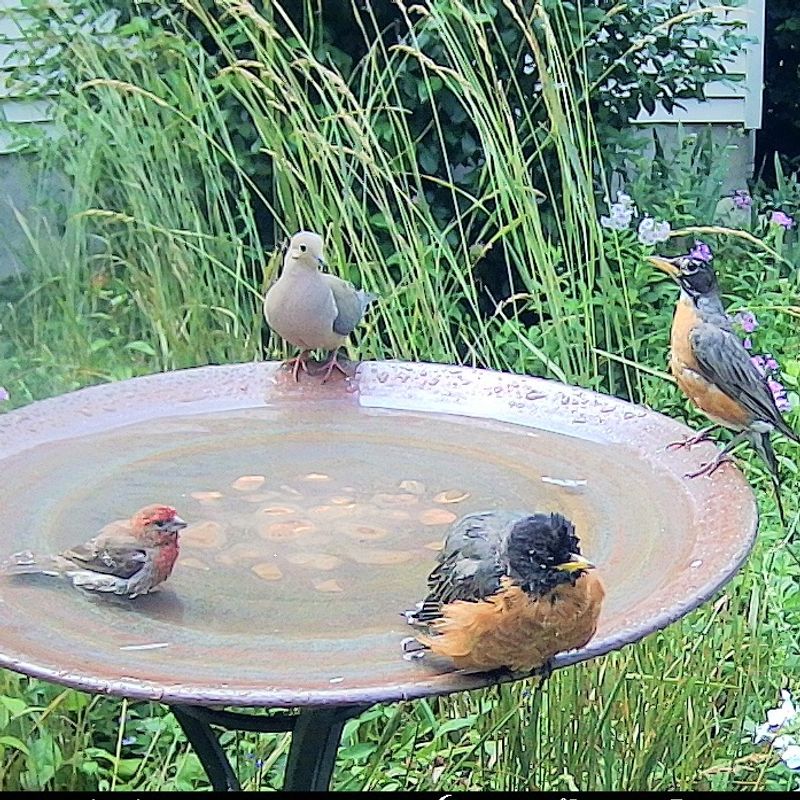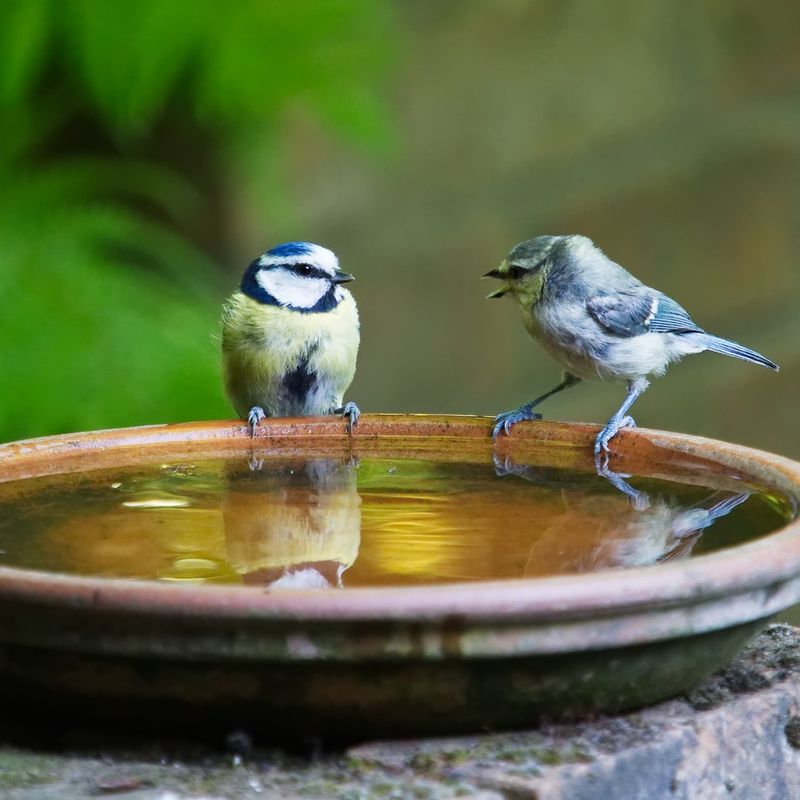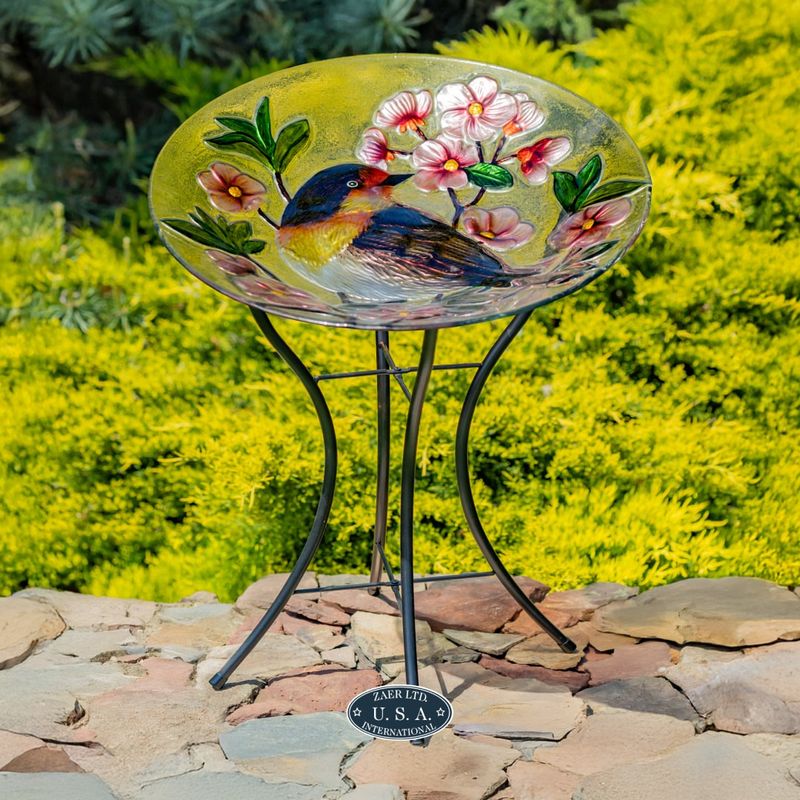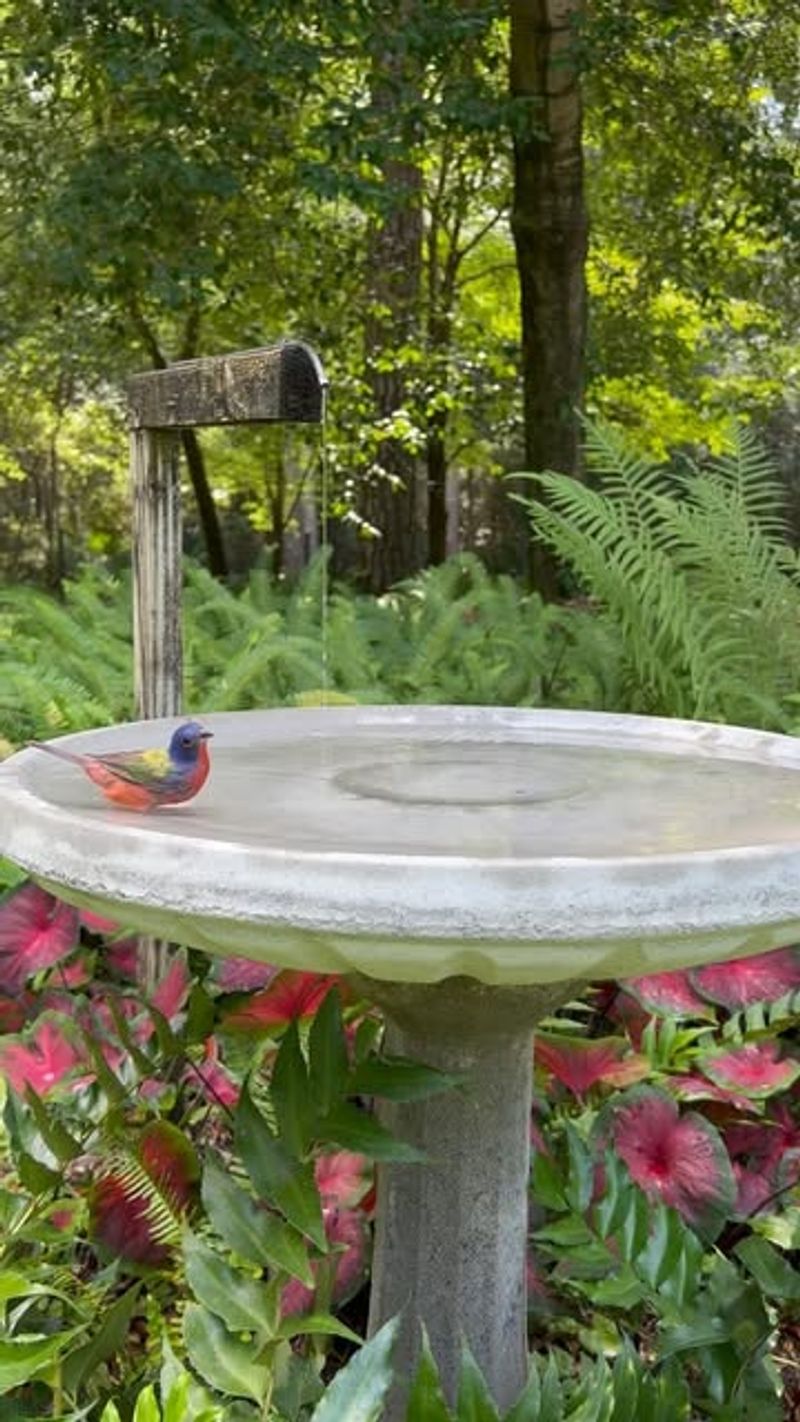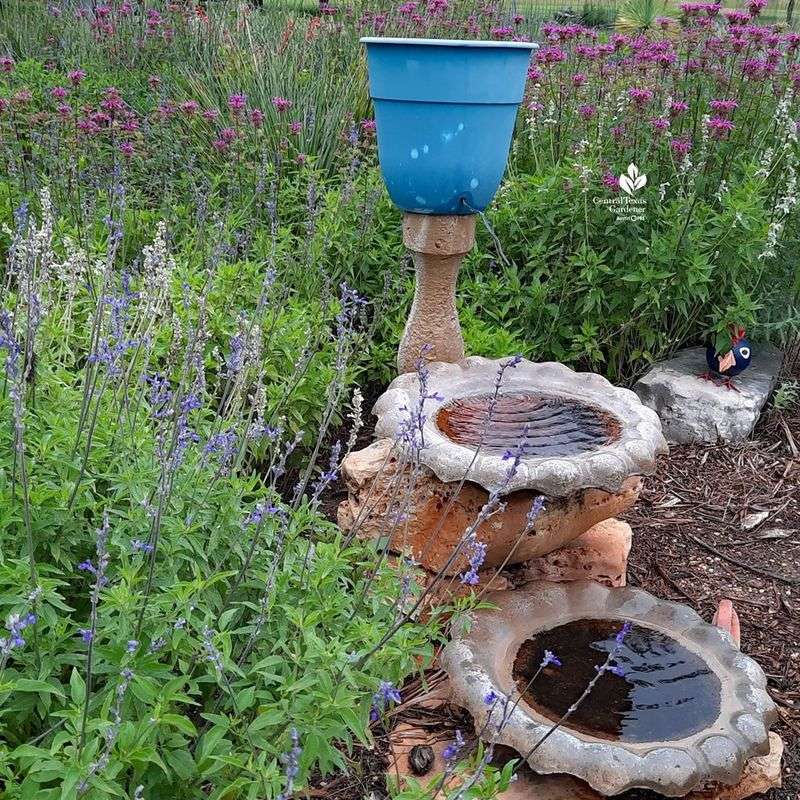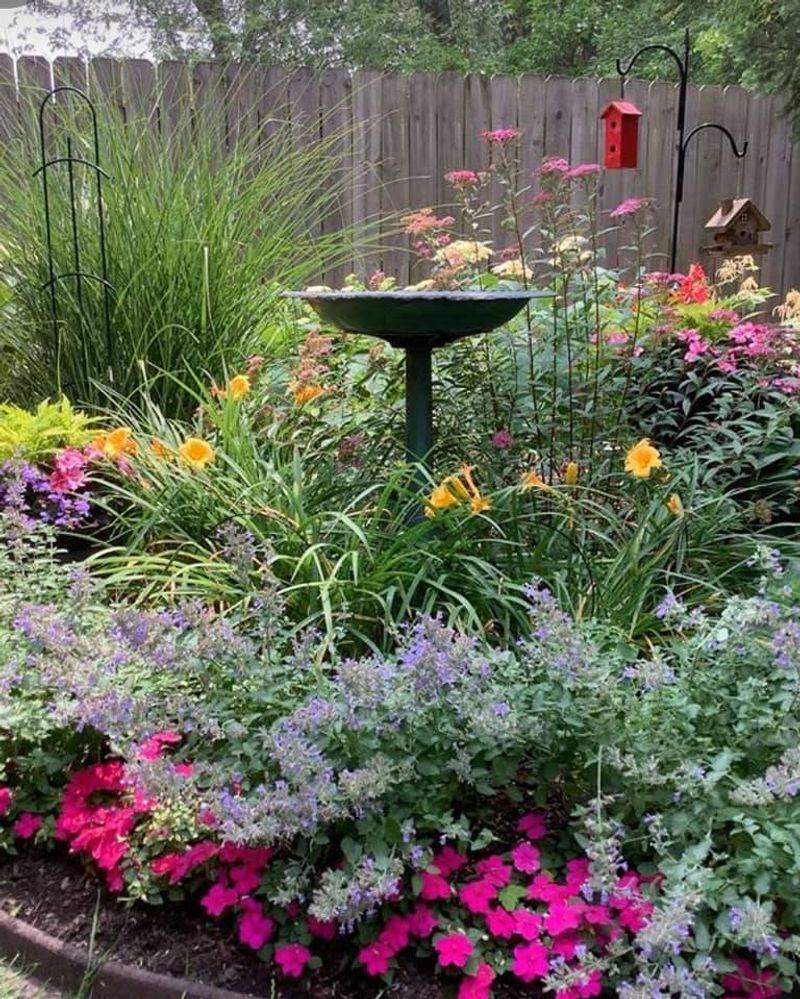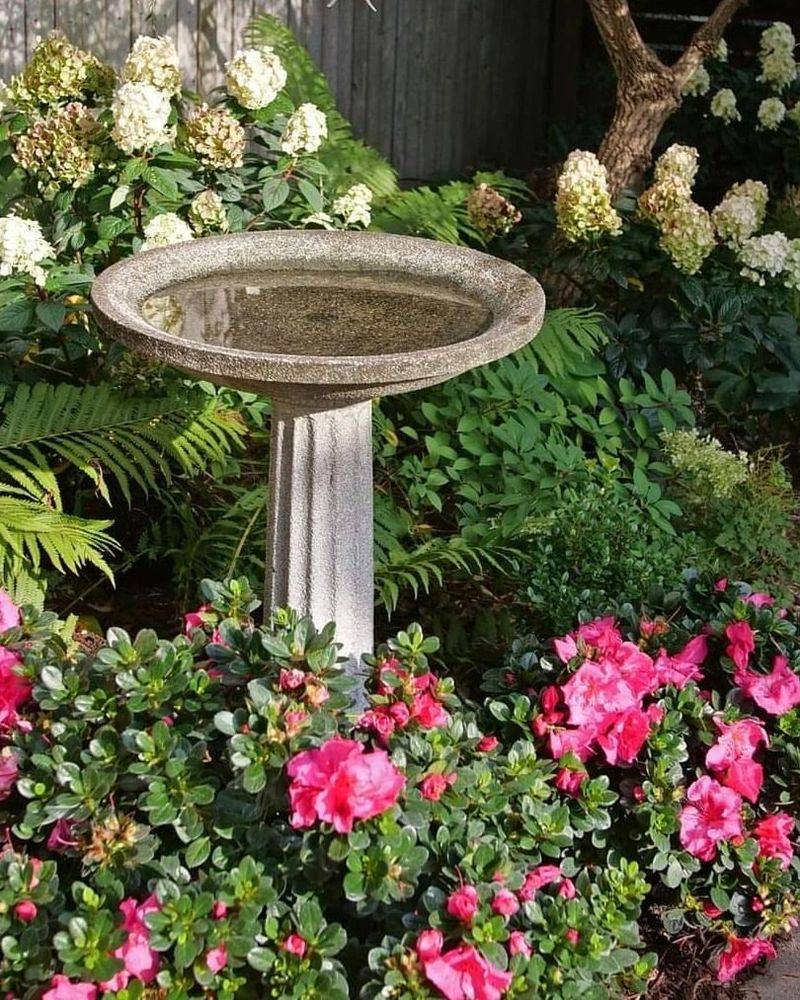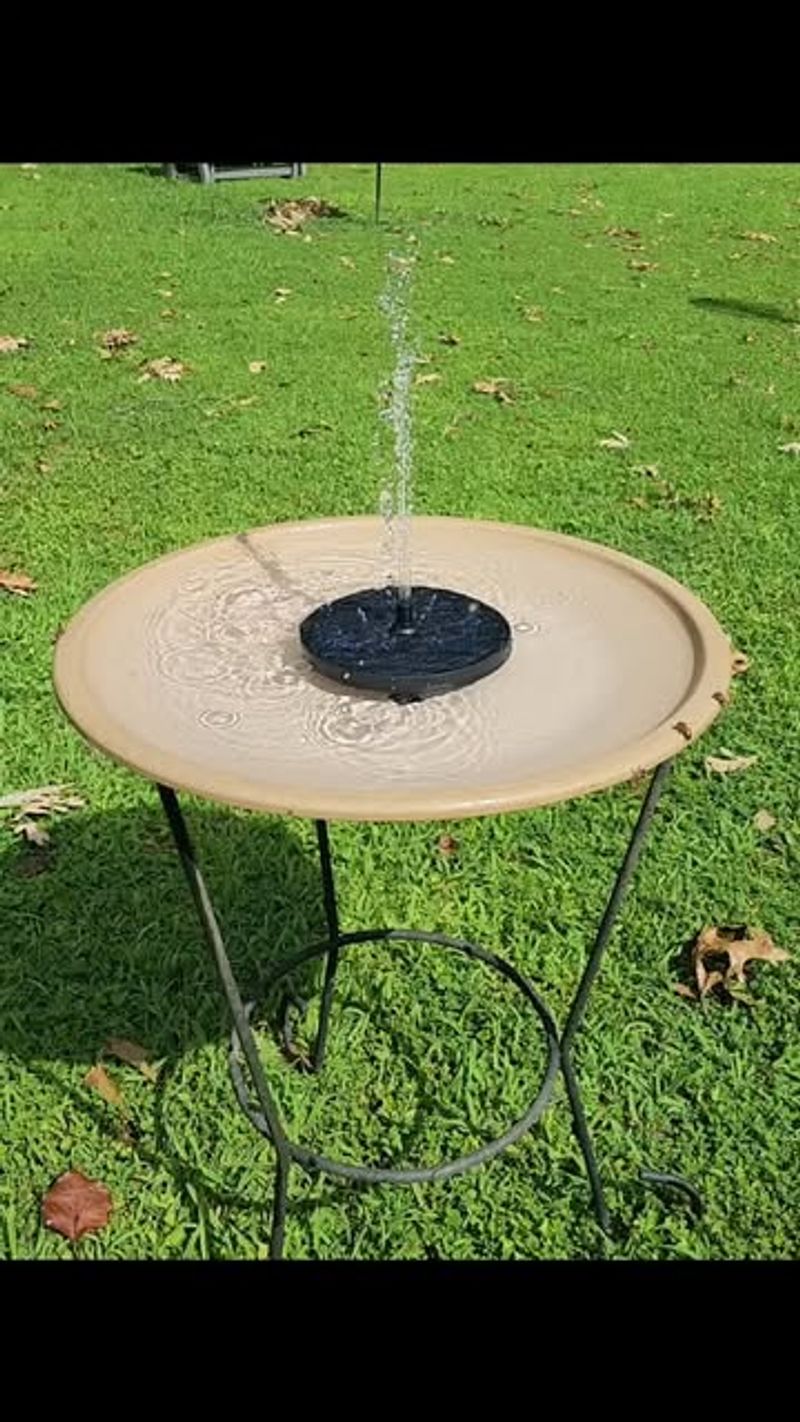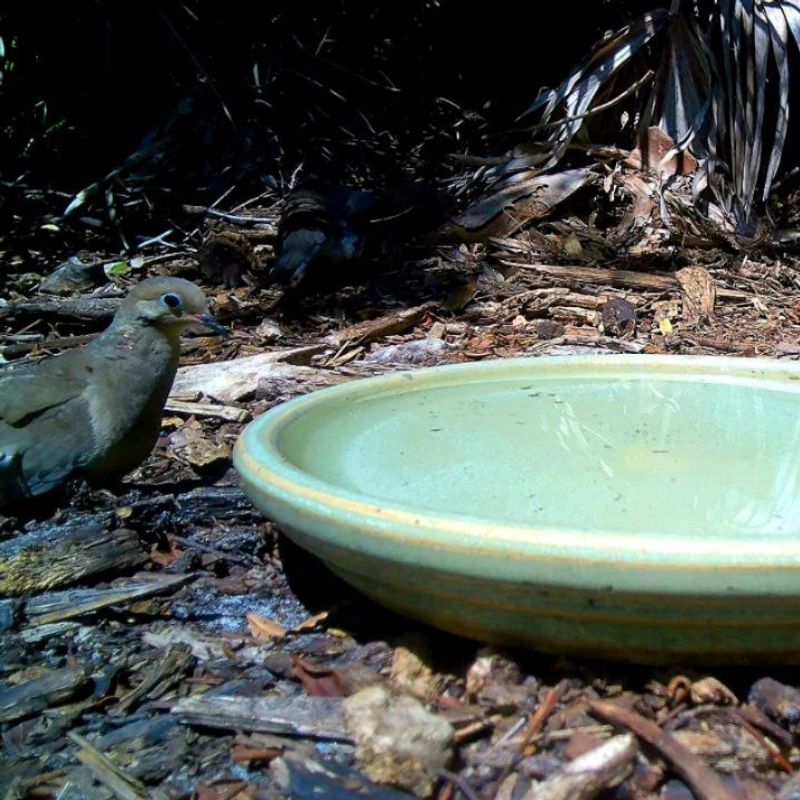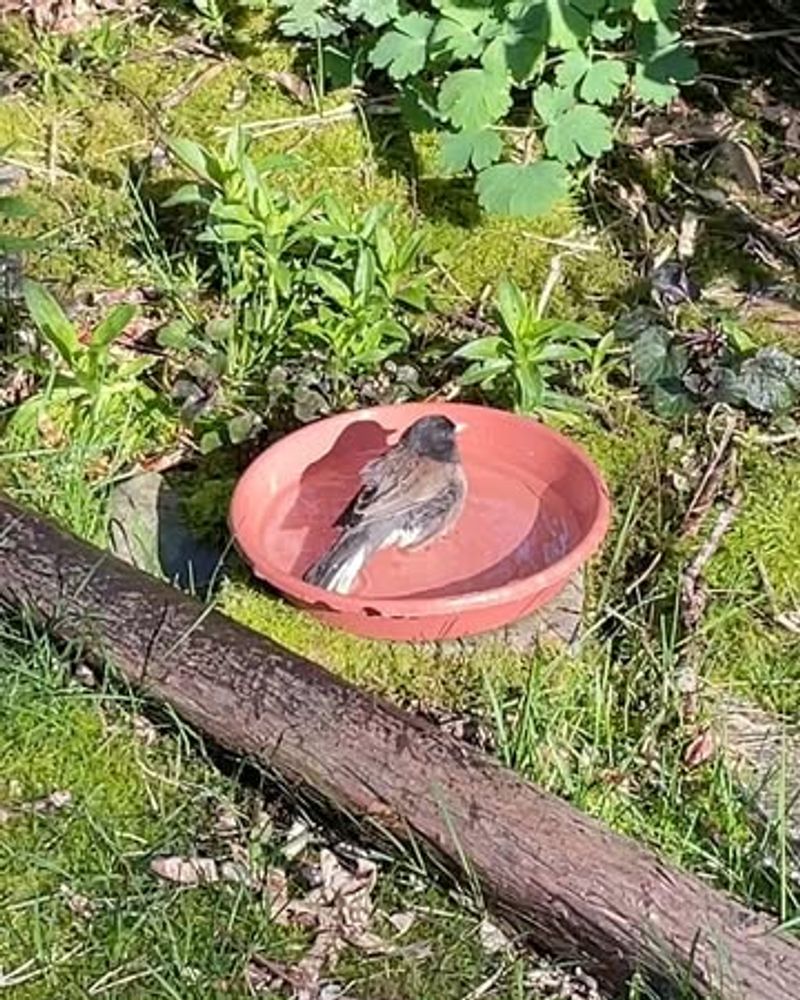When the summer sun is relentless, birds need more than just seed—they need safe, cool places to hydrate. A well-placed bird bath can offer essential relief, but location is everything.
Choosing the right spot helps keep the water clean, shaded, and inviting so your feathered friends can stay cool and safe during extreme heat.
1. Shady Spots Under Trees
Placing your bird bath under the leafy canopy of a tree creates a natural cooling station. The shade keeps the water temperature lower throughout the day, making it more refreshing for thirsty birds.
Trees also provide nearby perches where birds can rest before and after bathing. This setup mimics their natural habitat, making them feel safer and more likely to visit regularly.
2. Near Protective Shrubs
Birds feel vulnerable when bathing, so positioning your bird bath near dense shrubs gives them quick escape routes. Sparrows and finches particularly appreciate having bushy cover nearby when they stop for a drink.
The shrubs themselves create cooling microclimates around the bath. Just ensure there’s still enough open space for birds to spot predators while they’re enjoying their refreshing dip.
3. Morning Sun, Afternoon Shade
The perfect spot receives gentle morning sunlight but becomes shaded as the day heats up. Morning sun helps birds see the water sparkle, attracting them to your bath while temperatures are still comfortable. By midday, when heat intensifies, the shade prevents water from becoming uncomfortably warm.
This east-facing position creates the ideal temperature balance throughout the day, keeping birds coming back.
4. Elevated Locations
Mounting your bird bath on a pedestal or hanging it from a sturdy branch helps birds feel secure from ground predators. Higher positions catch cooling breezes that might not reach ground level during hot days.
Elevation also reduces the chance of contamination from garden debris and lawn chemicals. Just make sure the bath is stable enough not to wobble when larger birds land on it.
5. Away From Bird Feeders
Keep your bird bath at least 10-15 feet from feeders to prevent seed husks and droppings from contaminating the water. Separate stations reduce crowding and potential territorial disputes among different bird species. The distance creates a natural garden circuit for birds.
They can feed, fly a short distance to drink and bathe, then retreat to trees to preen and rest without congestion at any one spot.
6. Multiple Depths With Stones
Add smooth stones or pebbles to create varying water depths in your bird bath. Small birds like chickadees need shallow areas of just half an inch, while larger birds enjoy deeper sections for more thorough bathing. The stones also provide secure footing and help birds gauge water depth.
As an added bonus, the rocks absorb heat during the day and slowly release it overnight, preventing water from freezing in cooler seasons.
7. Near Sprinklers Or Misters
Position your bird bath where it occasionally catches the spray from garden sprinklers or install a dedicated mister nearby. The moving water creates a cooling effect and prevents mosquito larvae from developing.
Birds are naturally attracted to the sound and sight of moving water. Many species will fly through the gentle spray on hot days, using it as a refreshing aerial shower before landing in the bath.
8. Visible From Indoor Viewing Areas
Place your bird bath where you can easily see it from windows, patios, or favorite reading spots. Watching birds splash and play provides delightful entertainment while ensuring you notice when the bath needs cleaning or refilling.
Consider the viewing angle and background. A bath positioned with greenery behind it creates a natural frame for observing bird behaviors and makes colorful species stand out beautifully against the foliage.
9. Sheltered From Strong Winds
Wind accelerates water evaporation and can make birds uncomfortable while bathing. Position your bird bath near a fence, garden wall, or dense hedge that blocks prevailing winds without creating a hiding spot for predators.
The windbreak helps maintain water levels longer during hot spells. Birds also appreciate being able to dry their feathers without getting blown around after their bath, making wind-protected locations particularly popular.
10. Tiered Or Cascading Designs
Multi-level bird baths with water flowing between tiers create natural cooling through movement and evaporation. The sound of trickling water between levels acts as a powerful bird magnet, drawing them from surprising distances.
Different bird species prefer different tiers – warblers and finches often use upper levels while larger birds like jays typically choose the bottom basin. The moving water stays fresher longer in hot weather, requiring less frequent cleaning.
11. Near Native Flowering Plants
Surrounding your bird bath with native nectar-producing flowers creates a complete oasis. Hummingbirds and insect-eating species will visit the flowers then hop over to the bath, establishing a reliable routine in your garden.
The flowers attract beneficial insects that many birds feed on, turning the area into a natural buffet. Choose drought-resistant native blooms that provide both food and additional shade around the bath.
12. Reflective Garden Corners
Tucking a bird bath into a bright corner where light bounces off nearby surfaces creates a beacon for passing birds. The reflected light makes the water sparkle and catches birds’ attention from above as they fly over your neighborhood.
Light-colored fences, garden walls, or even strategically placed mirrors can enhance this effect. Just ensure the reflection doesn’t create too much heat or glare that might discourage sensitive species from approaching.
13. Regularly Refreshed Water Source
Location matters less than maintenance during extreme heat. Position your bath where you’ll remember to change the water daily – perhaps near a garden hose or along your regular outdoor path. Fresh water is cooler and more appealing to birds than stagnant water.
Consider adding a small fountain attachment or solar bubbler to keep water moving. These simple additions prevent algae growth while creating the cooling effect of constant circulation.
14. Secondary Emergency Stations
During heat waves, set up temporary satellite baths in different garden zones. Simple options like plant saucers or shallow bowls placed in shady spots provide emergency relief when main baths become overcrowded.
These backup stations help more birds access water simultaneously. Ground-feeding species like doves often prefer these lower alternatives to traditional pedestal baths, creating a more inclusive garden habitat during extreme weather.
15. North-Facing Garden Sections
The north side of your house or garden stays naturally cooler throughout summer days. Placing a bird bath in this location provides reliably cool water even during the hottest afternoons when south-facing areas become unbearably hot.
The temperature difference can be significant – sometimes 10-15 degrees cooler than exposed areas. Birds quickly learn where to find the most refreshing water in your neighborhood during heat waves.

